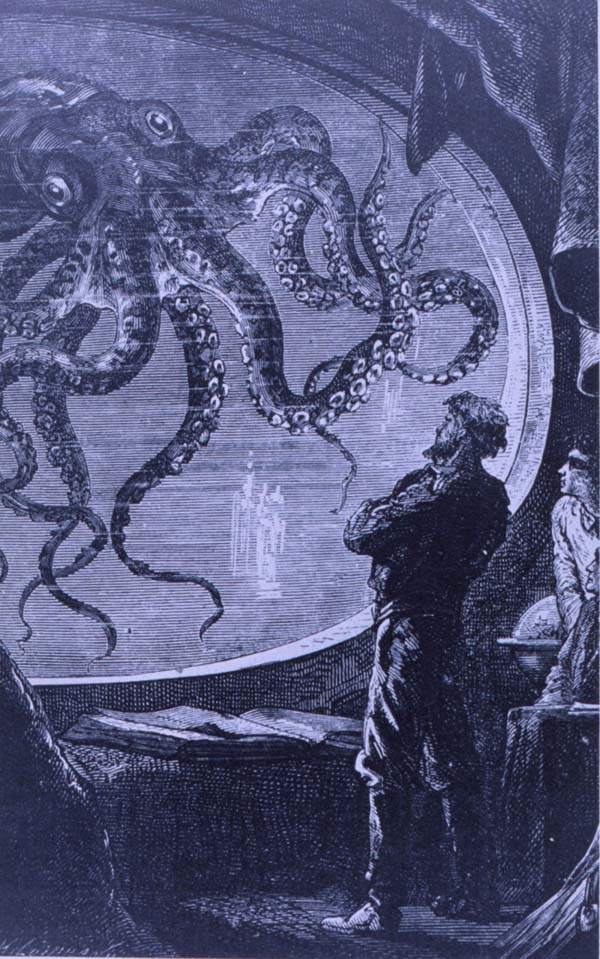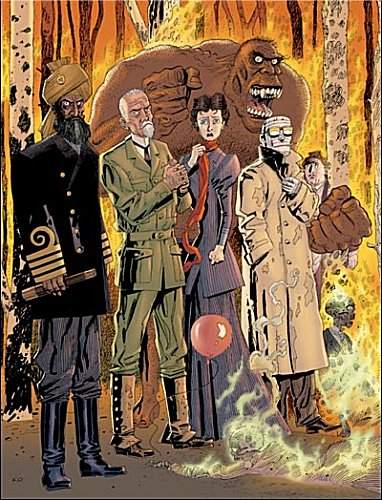Ship’s captains have been an important part of genre fiction for a long time. Thusly, in our first genre feature series, we’re looking at ship’s captains. Today’s captain is Nemo of the Nautilus.

Jules Verne was one of the most influential speculative fiction writers in history. He was a master of the adventure story, and was educated enough to include plausible scientific data in his adventures, unlike many of his contemporaries.
Many of the details about Nemo are smudged by translation errors and changes in continuity from one book to the next.
“20,000 Leagues Under the Seas” is perhaps his most famous novel, and it is where we get our introduction to Captain Nemo – whose name is an obvious pseudonym. In that first book, however he remains very much a mystery. We know only the basics: that his entire family was killed, and that he hates the civilized world.
In later books we discover much more, and Nemo – actually Prince Dakkar – becomes a clear symbol of anti-colonial sentiment. He has royal Indian blood, and his anger at the civilized world stems from political turmoil in British colonized India, specifically a conflict in which his family was massacred, and he barely escaped with his life.
He was a great leader of men, but that’s not all he had going for him. He wasn’t just the captain of the Nautilus, he was also the designer and builder of the ship, which was the most advanced submarine in the world, able to reach depths of 4 leagues, and able to stay away from port indefinitely, the later being a feat still not possible with today’s technology. It did have to surface every few days for fresh air, but otherwise, it was a completely self-sustaining environment.
This allowed Nemo to covertly attack colonial vessels without being detected, and without anyone but himself and his crew ever even seeing the ship. In the Nautilus, he roamed the world taking out whatever ships he could find which represented the civilization he distained.
Oddly, with all the violence, he does not seem to be an evil man. When one of his crew is killed, he grieves heavily for them, and even seems wracked with guilt at the deaths of the men he kills in his attacks as well. He’s not doing it for fun. He feels he has a duty to his family and country to take these actions, and he carries out his mission with remorse.
He doesn’t have much of a support staff, with many of his crewmen remaining mostly forgettable or even nameless. He has no friends, and spends most of his free time alone, reading or playing the Nautilus’s organ.
In Verne’s novels Nemo meets his end aboard the Nautilus, where he dies of old age. Later he and the Nautilus are entombed in molten rock, lost to the world forever.

There have been many reinterpretations of 20,000 Leagues, and just as many characterizations of Nemo, since his story is long in the public domain. One of the more interesting depictions is in the two volume graphic novel The League of Extraordinary Gentlemen, in which he takes a break from his other adventures to captain the Nautilus for the secret team as they build their membership, then later as they fight off a Wellsian alien invasion.
The depiction is compelling mostly because of his personal struggle to justify working for the British crown, when so much of his life has been spent fighting anyone associated with the colonials. He departs from the League after a political disagreement, and supposedly returns to his attacks on colonial ships, leaving only two members tasked with rebuilding the League.
Come back tomorrow when we will feature Captain Jean-Luc Picard. If there is a Ship’s captain which you would like to see featured in this series, let us know in the comments.






